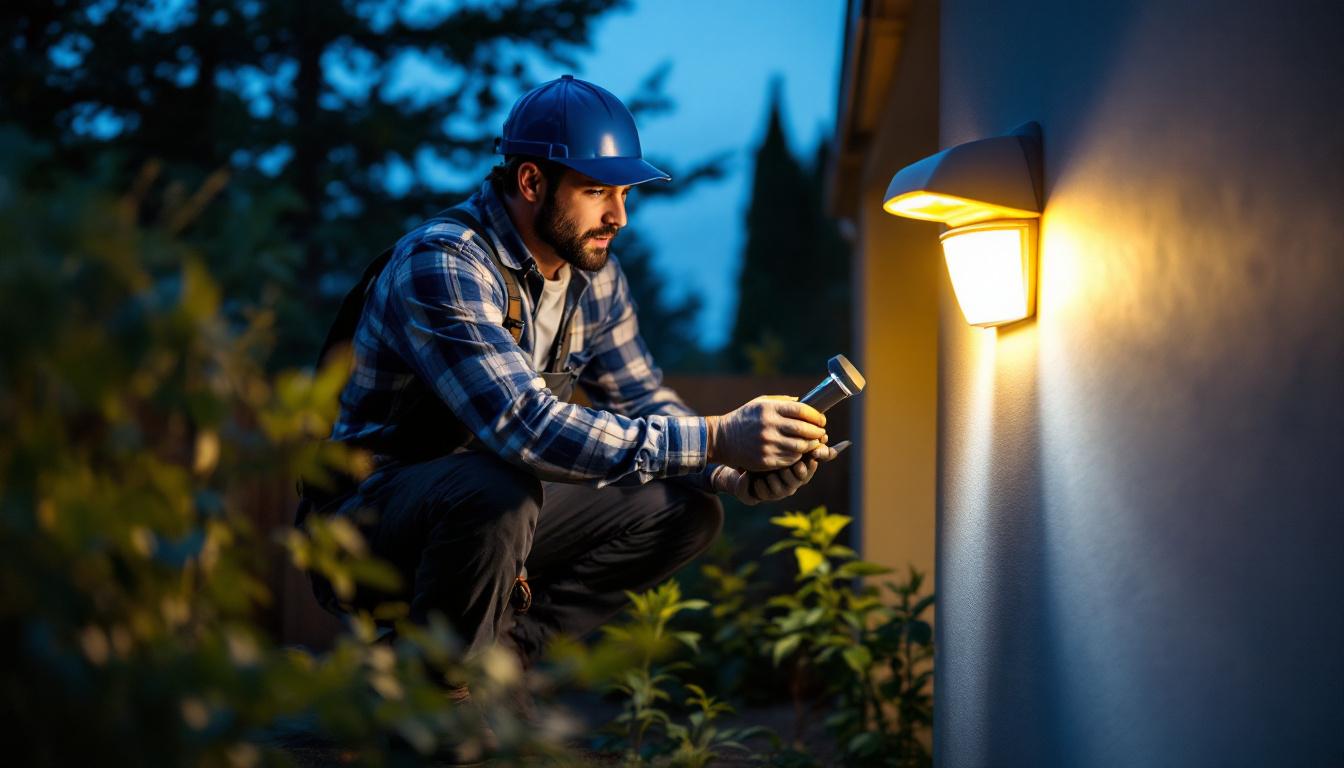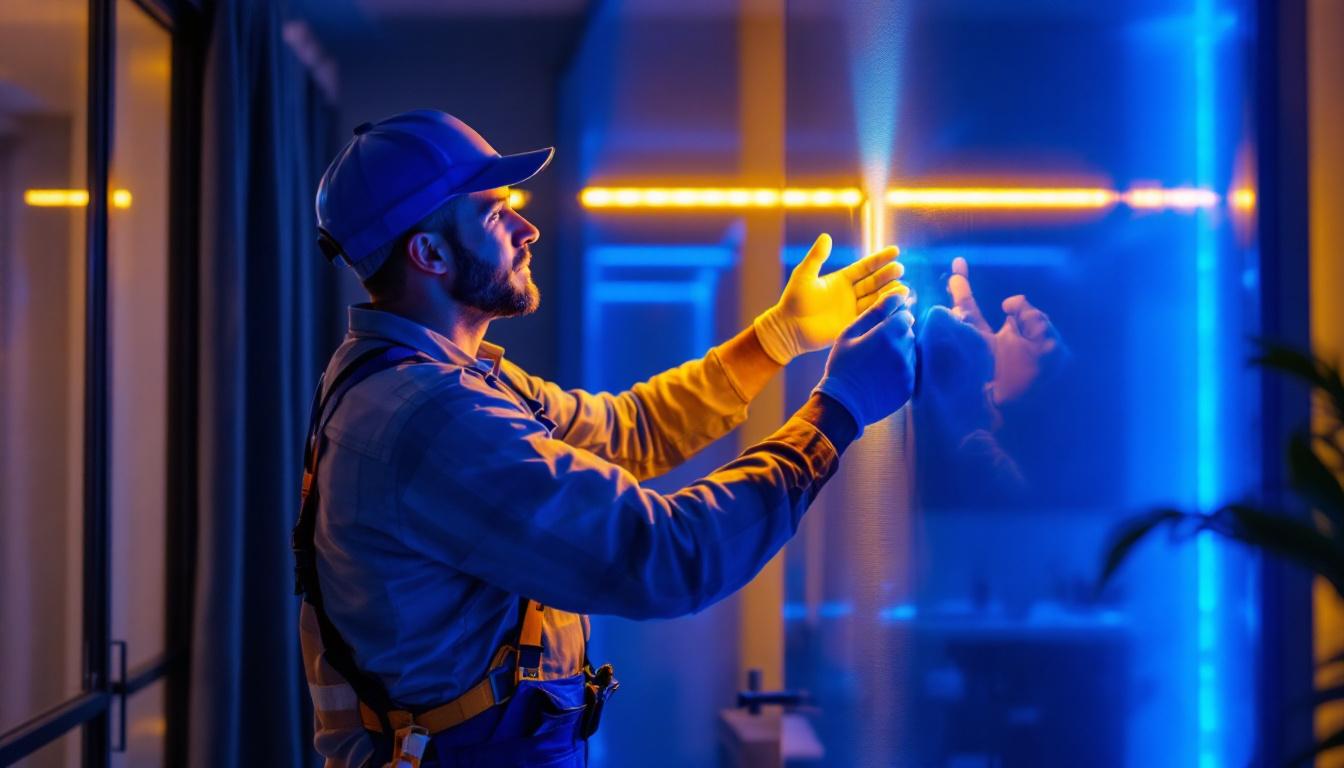
In the evolving landscape of outdoor lighting, motion light LED fixtures have gained significant traction among homeowners and businesses alike. These systems not only enhance security but also contribute to energy efficiency and convenience. For lighting contractors, understanding the best practices for installing and maintaining these systems is crucial. This article delves into the essential guidelines and considerations that contractors should keep in mind when working with motion light LED outdoor fixtures.
Before diving into installation practices, it is essential to grasp the technology behind motion light LED systems. LEDs, or light-emitting diodes, are known for their longevity and energy efficiency compared to traditional incandescent bulbs. When combined with motion sensors, they offer a dynamic lighting solution that activates only when movement is detected. This innovative combination not only provides illumination but also adapts to the environment, ensuring that energy is conserved while maintaining safety and visibility.
Motion light LEDs provide numerous advantages that make them an attractive option for outdoor lighting. Firstly, they significantly reduce energy consumption, as they only operate when needed. This aspect not only saves electricity but also extends the lifespan of the fixtures. In fact, many motion light LED systems can last up to 25 times longer than traditional bulbs, making them a cost-effective choice in the long run.
Additionally, these systems enhance safety and security. By illuminating areas when motion is detected, they deter potential intruders and provide a sense of safety for homeowners and businesses. Furthermore, the convenience of automatic lighting means that users do not have to fumble for switches in the dark. This feature is particularly beneficial for those carrying groceries or navigating outdoor spaces at night, as it allows for hands-free operation. Moreover, some advanced models come equipped with smart technology, enabling remote control and customization through mobile apps, which adds another layer of convenience and functionality.
Understanding the components of motion light LED systems is vital for effective installation. The primary elements include the LED light source, the motion sensor, and the control unit. The LED light source is typically energy-efficient and can vary in brightness and color temperature. This flexibility allows users to select lighting that best suits their needs, whether for security purposes or simply to create a welcoming atmosphere in outdoor spaces.
The motion sensor is crucial for detecting movement within a specified range. It can be passive infrared (PIR), which detects heat emitted by objects, or active, which uses microwave technology. The control unit manages the operation of the light based on the sensor’s input, allowing for adjustments in sensitivity and duration of illumination. Additionally, some systems feature adjustable mounting brackets and swivel heads, enabling users to fine-tune the direction and angle of the light for optimal coverage. This adaptability ensures that the lighting effectively illuminates walkways, driveways, and other critical areas, enhancing both functionality and safety in outdoor environments.
Proper installation is key to ensuring that motion light LED systems function effectively and provide the desired benefits. Here are some best practices that lighting contractors should follow during the installation process.
Before installation, conducting a thorough site assessment is essential. This involves evaluating the area where the motion lights will be installed, considering factors such as the layout, potential obstructions, and the typical movement patterns of people and vehicles.
Identifying the optimal locations for the fixtures is crucial. Areas that require illumination, such as driveways, entrances, and pathways, should be prioritized. Additionally, it is important to consider the range and angle of the motion sensors to ensure comprehensive coverage.
The height and angle at which motion lights are installed can significantly impact their effectiveness. Generally, mounting the fixtures at a height of 8 to 10 feet is recommended, as this height allows for optimal detection while minimizing the risk of vandalism.
Moreover, the angle of the motion sensor should be adjusted to cover the desired area without being obstructed by trees, walls, or other structures. A well-angled sensor will reduce false alarms and enhance the system’s reliability.
When installing motion light LEDs, ensuring proper wiring and power supply is critical. Contractors should adhere to local electrical codes and regulations to guarantee safety and compliance. Using weather-resistant wiring and connectors is essential for outdoor installations to withstand environmental factors.
Additionally, considering the power supply is vital. Motion lights can be hardwired or powered by solar energy. Each option has its advantages, and the choice should be based on the specific needs of the installation site.
Once the fixtures are installed, configuring the motion sensors correctly is crucial for optimal performance. This involves adjusting sensitivity settings, detection range, and duration of illumination. Understanding how to fine-tune these settings can significantly enhance the effectiveness of the lighting system.
The sensitivity of the motion sensor determines how easily it detects movement. Contractors should adjust this setting based on the installation environment. For example, in areas with high foot traffic, a higher sensitivity may be appropriate, while in quieter locations, a lower sensitivity can help prevent false triggers.
Testing the sensitivity after installation is advisable. Walking or moving within the sensor’s range can help determine if adjustments are necessary. This step ensures that the lights activate appropriately without unnecessary interruptions.
Most motion sensors come with adjustable detection ranges. Contractors should configure this setting to cover the desired area effectively. The detection angle is also crucial; a wider angle may be beneficial in open spaces, while a narrower angle may be more suitable for confined areas.
It is essential to test the detection range after installation. This can be done by walking through the area to ensure the lights activate at the right moments. Adjustments can be made as needed to enhance performance.
The duration of illumination refers to how long the lights remain on after detecting motion. This setting can typically be adjusted based on user preferences. For high-traffic areas, a longer duration may be suitable, while in less frequented spaces, a shorter duration can conserve energy.
Contractors should communicate with clients about their preferences for illumination duration. This collaboration ensures that the system meets the user’s needs while maintaining efficiency.
Regular maintenance is essential to ensure the longevity and effectiveness of motion light LED systems. Contractors should educate clients about maintenance practices and be prepared to troubleshoot common issues that may arise.
Conducting routine inspections of the motion light systems is vital for identifying potential issues before they escalate. This includes checking for physical damage to the fixtures, ensuring that the sensors are clean and unobstructed, and verifying that the lights are functioning correctly.
During inspections, it is also important to check the wiring and connections for any signs of wear or corrosion. Addressing these issues promptly can prevent more significant problems down the line.
Keeping the fixtures and sensors clean is crucial for optimal performance. Dirt, dust, and debris can obstruct the sensors, leading to false triggers or reduced sensitivity. Contractors should recommend periodic cleaning of the fixtures and sensors to clients, emphasizing the importance of maintaining clear lines of sight.
In addition to cleaning, contractors should also advise clients on the importance of checking the LED bulbs for any signs of flickering or dimming. Replacing bulbs promptly ensures that the lighting system remains effective and reliable.
Despite proper installation and maintenance, issues may occasionally arise with motion light LED systems. Common problems include false triggers, lights not activating, and inconsistent illumination. Understanding how to troubleshoot these issues can save time and enhance client satisfaction.
For false triggers, contractors should first check the sensitivity settings and adjust them as necessary. Additionally, ensuring that the sensor is not obstructed by foliage or other objects can help mitigate this issue.
If the lights are not activating, checking the power supply and wiring connections is essential. If the system is hardwired, verifying that the circuit is functioning correctly can also help identify the problem. In cases where the issue persists, consulting the manufacturer’s guidelines may provide further insights.
Effective communication with clients is vital for ensuring that they understand the features and benefits of their motion light LED systems. Educating clients about the technology and its operation can lead to higher satisfaction and fewer service calls.
Contractors should take the time to explain the features of the motion light LED systems to clients. This includes discussing the energy efficiency of LEDs, the advantages of motion detection, and the potential for cost savings on electricity bills.
Highlighting the security benefits is also crucial. Clients should understand how these systems can deter intruders and enhance safety in their outdoor spaces. Providing real-world examples of how motion lights have positively impacted other properties can reinforce the value of the installation.
After installation, providing clear operating instructions is essential. This should include information on how to adjust the settings, troubleshoot common issues, and maintain the system. Providing a written guide can be beneficial for clients to refer back to as needed.
Encouraging clients to reach out with any questions or concerns fosters a positive relationship and demonstrates a commitment to customer service. This open line of communication can lead to repeat business and referrals.
Motion light LED outdoor fixtures represent a significant advancement in outdoor lighting technology, offering both energy efficiency and enhanced security. For lighting contractors, mastering the best practices for installation, maintenance, and client education is essential for success in this evolving field.
By understanding the technology, adhering to installation best practices, and maintaining open communication with clients, contractors can ensure that their motion light LED systems operate effectively and meet the needs of their customers. As the demand for energy-efficient and secure outdoor lighting continues to grow, staying informed and adaptable will be key to thriving in this competitive industry.
Ready to elevate your lighting installations with the latest motion light LED outdoor fixtures? Look no further than LumenWholesale for all your lighting needs. Our extensive selection of spec-grade lighting products ensures you have access to the best quality at wholesale prices, giving you the competitive edge in the industry. Say goodbye to middleman markups and hello to unbeatable value. Plus, with free shipping on bulk orders, you can stock up on high-performance lighting without the worry of hidden fees. Make your next project shine with the perfect blend of quality, affordability, and convenience at LumenWholesale – Wholesale Lighting at the Best Value.

Discover the pitfalls lighting contractors often encounter with industrial LED fixtures.

Discover how specialized artwork lighting fixtures can give lighting contractors a competitive edge.

Explore how strip lighting LEDs are revolutionizing the work of lighting contractors, enhancing design flexibility, energy efficiency, and project outcomes.

Discover how the 3 1/2 junction box cover can significantly impact lighting contractors’ profitability.